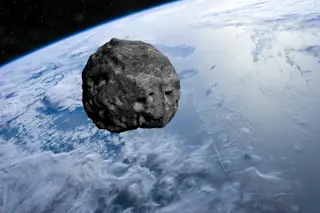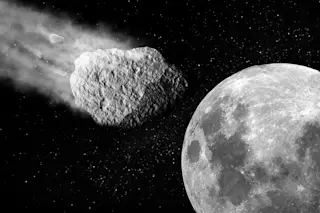Yesterday, astronomers had the thrill of detecting an asteroid headed straight for earth and watching it hit our planet's atmosphere just when they predicted, but without any of the panic that might be expected to accompany the foreknowledge of an asteroid strike. The space rock, which was about nine feet in diameter, was too small to do any damage, and burned up in the atmosphere while astronomers watched. The object's entry into the atmosphere wasn't that unusual:
Such an event happens roughly every three months. But this is "the first time we were able to discover and predict an impact before the event", says Donald Yeomans, manager of NASA's Near-Earth Object (NEO) programme [Nature News].
Researchers say the accurate prediction bodes well for humanity, for it suggests that astronomers are up to the challenge of detecting and tracking larger asteroids that could pose a more serious threat to human populations. ...













